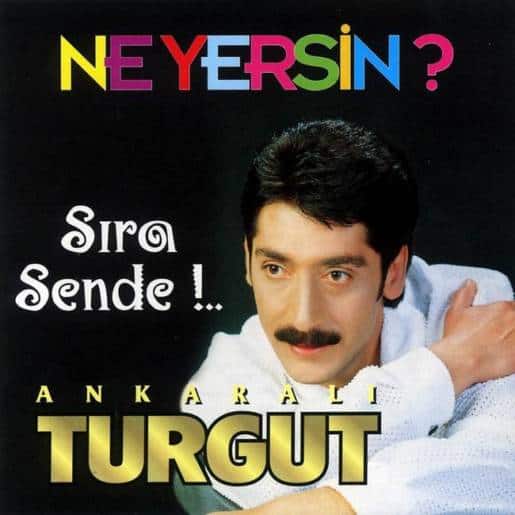Let me say straight away that this is not an encyclopedic or historical article on Turkish music. Rather, these are my observations on the culturally diverse music of this beautiful country we call Turkey. So, where to start? The ney (reed flute), saz (stringed instrument, similar to a guitar) and the darbuka (percussion) are the three main ingredients used to make a pot of steamy, passionate Turkish music. But it’s important to note that the music of Turkey varies between the regions just as much as its people do. Turkish folk music is so diverse, the easiest way to categorise it is along geographical lines.
Central Anatolia: The music of this region has rather comical story-like lyrics accompanied by an electro saz. The superstar of Central Anatolian folk music is Ankaralı Turgut (think of a Super Mario Bros lookalike with shiny polyester suits and Elvis-like hair). The song most people love to sing along and dance to is called none other than “Ankara’nın Bağları” (The Vineyards of Ankara).

Black Sea: The Black Sea folk liken themselves to the hamsi (anchovy-like fish) they eat everyday. They can’t keep still, and are very energetic, just like their high tempo music. Perfect for dancing when the impatient Black Sea folk lose their infamous temper. Stocky, comedic and long grey-haired Volkan Konak is the apple of the Black Sea’s eye.
Aegean: Turkey is home to the bağlama (a guitar-like instrument). Right across the shores, the Greek neighbours have a similar instrument called the bazuki. It’s no wonder that people in both countries love the Aegean style of music, which mostly entails happy, drama-free lyrics with a soft blend of instruments. This means that there are a lot of Greek-influenced meyhanes (taverns) to be found in Turkey. Armenian born white-haired, golden tanned Fedon is the superstar of the Aegean shores.
East and South East: The music of Eastern Turkey is mostly filled with songs that are sung in high-pitched voices with depressing lyrics about human suffering. This genre, sometimes called arabesk, is greatly influenced by Arab music. The superstar is without a doubt Ibrahim Tatlises, he is also known as The Emperor (that good!). While Ibo (as people lovingly refer to him) started off with fame in Urfa, he is now not only famous and popular in Turkey, but in most Arab countries.
Trakya: We can call this region the pioneers of Roman/Gypsy music. The Roman people can not stand still when they hear the sound of music, they MUST dance! And once you hear their music, you can understand why – it’s happy, cheery, fun and energetic. The superstar of Trakya is of course Kibariye (Marilyn Monroe wannabe but never going to happen).

Now for the fun part! Where can you hear each genre? We have arabesk, Turkish sanat music, Turkish pop, Turkish hip-hop, fasil, fantezi, Anadolu rock, and Turku rock.
Turkish sanat (classical/art) music is usually listened to at meyhanes while eating rakı/balık (aniseed flavoured liquor and fish) with mates. The meyhanes are accompanied by çalgıcılar (musicians). It’s such a sight to watch the younger generation singing along to Turkish sanat music at the top their lungs while drunk on rakı, as these songs are usually only listened to by the older generation.
Arabesk is best listened to after heartbreak or when you are experiencing platonic love. You will hear arabesk music on the blue minibuses, the drivers singing along while thinking they are one part Formula One drivers, one part love torn Romeos. The superstars of arabesk music are Orhan Gencebay and Müslüm Gürses.
The background music of suffering (Turkey’s favourite past time) started with arabesk, but once Turkey became more westernised, Turkish hip-hop was derived. The young people who listened to arabesk and cut their wrists with razors at the concerts (I’m not kidding, they really do self-harm at these events), all of a sudden started to cover up their scarred wrists with baggy t-shirts and wore their caps to the side and started listening to Turkish hip-hop superstar Ceza.

Turkish pop is best heard with the volume full blast in taxis and beach clubs along the Bosphorus, Bodrum, Marmaris, etc. At first Turkish pop was western influenced, but as the years progressed, Turkish composers started to add Turkish musical structures like the saz and the Roman gypsy style clarinet. The king of Turkish pop is, without a doubt, Tarkan (famous not only in Turkey, but also internationally).
In between arabesk and Turkish pop, you have a stopover at fantezi music. The queen of fantezi music is Ebru Gündeş. Other interesting fusions of Turkish music are Turku rock, with the rockstars of the genre being Duman, and Anatolian rock, of which Haluk Levent is the most well-known.
So whether you are in the mood for yelling at the top of your lungs accompanied by a few good çalgıcılar, head-bopping along in your taxi to the beats of Tarkan or just swaying to and fro with rakı in one hand, Turkish music definitely has something for everyone to appreciate.
Mira Xavnur Balic is a contributor to Yabangee











[…] complaining about Turkish music when you only know that one Tarkan […]